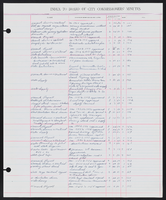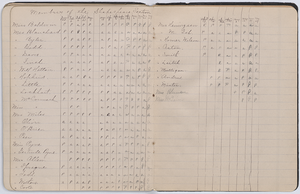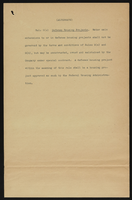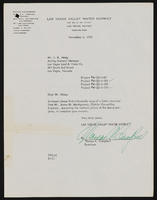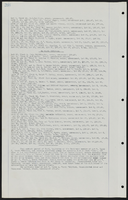Search the Special Collections and Archives Portal
Search Results

Transcript of interview with Vernon Caples by Cheryl Caples, February 25, 1979
Date
1979-02-25
Archival Collection
Description
Narrator b.1891. Las Vegas history from 1942 to 1979. Las Vegas airfield (Nellis). Prostitution. Hoover (Boulder) Dam: two anecdotes. Effect of WWII on Las Vegas. Hotel/casinos during the 1940s and 1950s. Leisure activities. Eldorado Festival. Lorenzi Park. BMI Plant. Retirement in Las Vegas.
Text

Transcript of interview with John F. Cahlan by Radmila Radovich, February 27, 1980
Date
1980-02-27
Archival Collection
Description
John Cahlan (1902-1988) is interviewed by Radmila Radovich about the beginning of Las Vegas, including the role of the Union Pacific Railroad and its need for water. Cahlan discusses the changes in Las Vegas over time, including the evolution of the Western Air Express station to Nellis Air Force Base, as well as his concerns for the future of Las Vegas.
Text

Transcript of interview with Charles A. Bennett by Michael Kulwin, March 5, 1979
Date
1979-03-05
Archival Collection
Description
Michael E. Kulwin interviews co-worker Charles A. Bennett (b. 1914) at his home. Bennett discusses early gaming figures, real estate, Howard Hughes, and casino development. Bennett also weighs in on the Carol Lombard plane crash tragedy, and the early atomic bomb tests conducted in Nevada.
Text

Transcript of interview with Marilyn B. Brockett by Jay Brewer, April 25, 1975
Date
1975-04-25
Archival Collection
Description
Jay Brewer interviews local store clerk Marilyn B. Brockett, born December 10th, 1925, in Cedar City, Utah. Marilyn B. Brockett, originally known as Marilyn B. Ballard before marriage, moved to Nevada in 1932. During this interview Brockett discusses social changes and the growth of Boulder City, Nevada from 1932 to 1975.
Text

Transcript of interview with Charles Adams by Robert Melcer, February 27, 1979
Date
1979-02-27
Archival Collection
Description
Robert Melcer interviews Charles Adams (born 1930 in Juliet, Illinois), at the University of Nevada, Las Vegas (UNLV). The two discuss various topics, including Adams’s move to Southern Nevada, the growth of Las Vegas, the educational system, the growth of the English Department at the university, cultural and recreational activities for locals, raising a family in Las Vegas, and prostitution in Southern Nevada.
Text
Pagination
Refine my results
Content Type
Creator or Contributor
Subject
Archival Collection
Digital Project
Resource Type
Year
Material Type
Place
Language
Records Classification

